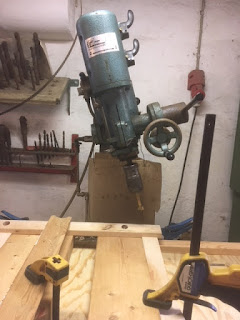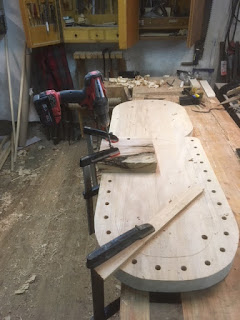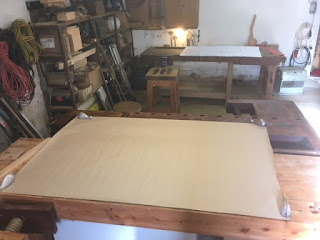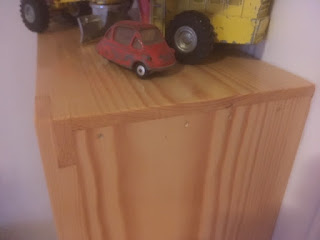I have earlier expressed
my interest in building a boat on this blog, and I have slowly gathered information from books, blogs, etc. on the process of doing so.
I even purchased a set of drawings for a small lapstrake tender (
the "irreducible" by Weston Farmer) and believe it or not - I milled some larch for the project a couple of years ago, so it would be ready whenever I was.
Before building a boat, you are supposed to loft the plans, which is a fancy expression for enlarging the drawings to full size on e.g. a piece of paper.
Boat drawings come with something called a "table of offsets". These represent positions in a coordinate system, and then once all are plotted you connect those dots and that should give the finished plans of the boat.
There is a small but important thing to notice about this dot connecting business though. The lines are not straight lines. So you need a flexible batten to help you draw that curve. Furthermore, the curve is not the same all along its length, so you will need something to hold the batten in place at various points while you adjust it, and then finally you can draw the line.
Those things are known as drafting whales. (drafting ducks, lofting ducks or lofting whales are other names for them).
For a couple of years I have regularly fantasized about casting a set of those. But I wasn't sure how to make a mold that would give a really nice result without trying to learn sand casting, and I didn't want to spend an enormous time on achieving anew skill for this.
A thing that kept holding me back was that I had the idea that those whales had to look really nice. In a way this suddenly became vital for the positive outcome of the planned boat building adventure.
I mean how could I ever present a boat that I had built unless the drafting whales used were perfect? Probably the majority of people who would ever see the boat would immediately demand to see the drafting whales I had used for lofting the plans!
It wouldn't matter if the boat was pretty and tight etc. because clearly those whales were the most important part of it all. Actually the reason why people build boats was probably so they could use their drafting whales.
Finally this time while at home I managed to get a grip on reality, and consider that maybe people wouldn't care if I had used a heavy stone, an old flywheel, a lead ingot or a horse shoe instead of a perfect whale when I laid out the lines. So maybe it would be OK to cast some even if they ended up less than perfect.
It was a daunting thought!
So somehow at a quarter past nine in the evening, I headed into the shop determined to try to make a wooden mold.
A piece of larch was split in the middle on the table saw, and I quickly sketched the profile of a fat little whale on one side of it. On the adjacent side I sketched the outline as seen from below.
That didn't take long.
Finding a sharp gouge and removing some material was also very fast. In very little time, I suddenly had half a mold.
I held the two sides of the mold together, and traced the whale profile from the first mold to the second piece of wood.
Removing the wood was just as quick, and in just a bit more than an hour I ended up with a decent mold. I couldn't believe that it had taken me several years to gather the courage to do it.
The next day I melted some lead from old tire weights and some sheet lead that I had lying around.
A 3" nail was bent and inserted in the mold. The two parts were clamped together in the vise, and I poured the lead in.
The first whale casting caused a bit of bubbles, because of all the gas that would escape from the charring of the sides of the mold.
The next casting was perfect until I opened the mold too soon.. It broke in two.
After getting an idea of the solidifying time, I ended up making 10 whales. In the end the mold became more and more charred, so the whales started getting a larger and larger back fin.
But it will be no problem to remove this with an ordinary knife.
I plan on painting the whales after removing the surplus lead from them. But that will happen at some point while I am at home.
First half of the mold.
Mold clamped in the vise.
Filled with molted lead (now solidified)
The first whale is the one with a bit of color.
Notice how the back fin gets bigger.


















































